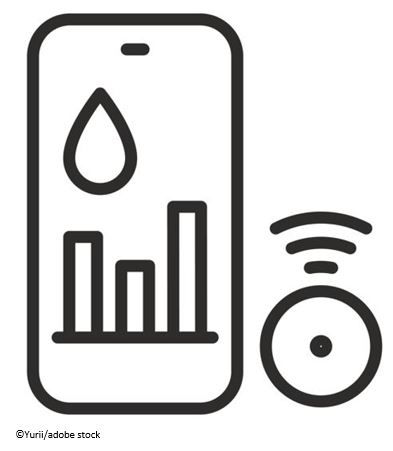- Clinical Technology
- Adult Immunization
- Hepatology
- Pediatric Immunization
- Screening
- Psychiatry
- Allergy
- Women's Health
- Cardiology
- Pediatrics
- Dermatology
- Endocrinology
- Pain Management
- Gastroenterology
- Infectious Disease
- Obesity Medicine
- Rheumatology
- Nephrology
- Neurology
- Pulmonology
Flash CGM Increases Time in Range for T2D Patients on Noninsulin Therapies Not at Goal HbA1c
People with type 2 diabetes (T2D) inadquately controlled with noninsulin therapies who used flash glucose monitoring (FGM) achieved significantly greater time in range (TIR) and significantly greater reduction in HbA1c compared with those who did not use FGM, according to an interim analysis of the IMMEDIATE study. The findings were presented at the American Diabetes Association 82nd Scientific Sessions, June 3-7, 2022.

Continuous glucose monitoring (CGM) has been integral to improving glycemic outcomes in people with diabetes who are treated with insulin regimens, according to authors of the current analysis. Of interest to the investigators was the impact specifically of FGM on time spent in target glucose range among adults with T2D treated with noninsulin diabetes medications not reaching HbA1c targets.
IMMEDIATE is a multicenter randomized, 2-phased cross-over study (ClinicalTrials.gov ID: NCT04562714) with each phase running for 16 weeks. In phase 1, results of which are reported here, participants were randomized in a 1:1 ratio to receive a FGM device plus diabetes self-management education (DSME) (intervention) or to recieve DSME only (control).
The primary outcome measure of the first phase was the proportion of time spent within target glucose range (3.9 to 10.0 mmol/L) during the last 2 weeks of the 16-week period. The outcome was assessed by blinded CGM device worn at baseline and at outcome. Among the secondary outcomes of interest were mean HbA1c at end of phase 1, documented episodes of hypoglycemia, and satisfaction with FGM.
A total of 116 participants were enrolled in the study (age 58.4 ± 10.1 years; T2D duration 10.1 ± 6.1 years; HbA1c 8.6 ± 1.1%). There were 82 initial completers of this phase, divided equally 41:41 between FGM plus DSME and DSME alone.
When CGM data were reviewed, TIR was significantly greater in the FGM + DSME arm (76.1 ± 16.9%) compared to the DSME only arm (64.3 ± 23.2%) (p<.01), according to the study abstract.
Similarly, those in the FGM + DSME arm spent significantly less time above range vs the DSME only participants (21.5 ± 17.8% vs. 31.3 ± 25.6%, p=.03) as well as less time below range vs the DSME group (2.3 ± 5.0 vs 3.7 ± 8.7, p=.38). Episodes of hypoglycemia were rare in both arms.
Participants using both FGM and DSME also achieved a greater change in HbA1c compared to those in the DSME arm (-0.9 ± 0.9% vs. -0.5 ± 0.9%, p=.03).
Scores for satisfaction with glucose monitoring improved in the FGM + DSME arm only (0.6 ± 0.5 vs 0.0 ± 0.5, p<.01).
Based on this interim data analysis, FGM users with T2D using noninsulin therapies spent signficnalty greater TIR than those who did not use FGM, had greater reductions in HbA1c, and reported satisfaction with glucose monitoring, the researchers write in the study abstract.
During phase 2, participants initially assigned to receive DSME education alone will crossover and recieve a FGM device while participants initially using the device will continue to use it. There will be no DSME provided during this phase.
Reference: Brown RE, Aronson R. Impact of flash glucose monitoring in people with type 2 diabetes inadequately controlled with noninsulin antihyperglycemic therapy: IMMEDIATE study. Diabetes 2022;71 (Supplement_1):95-OR.
